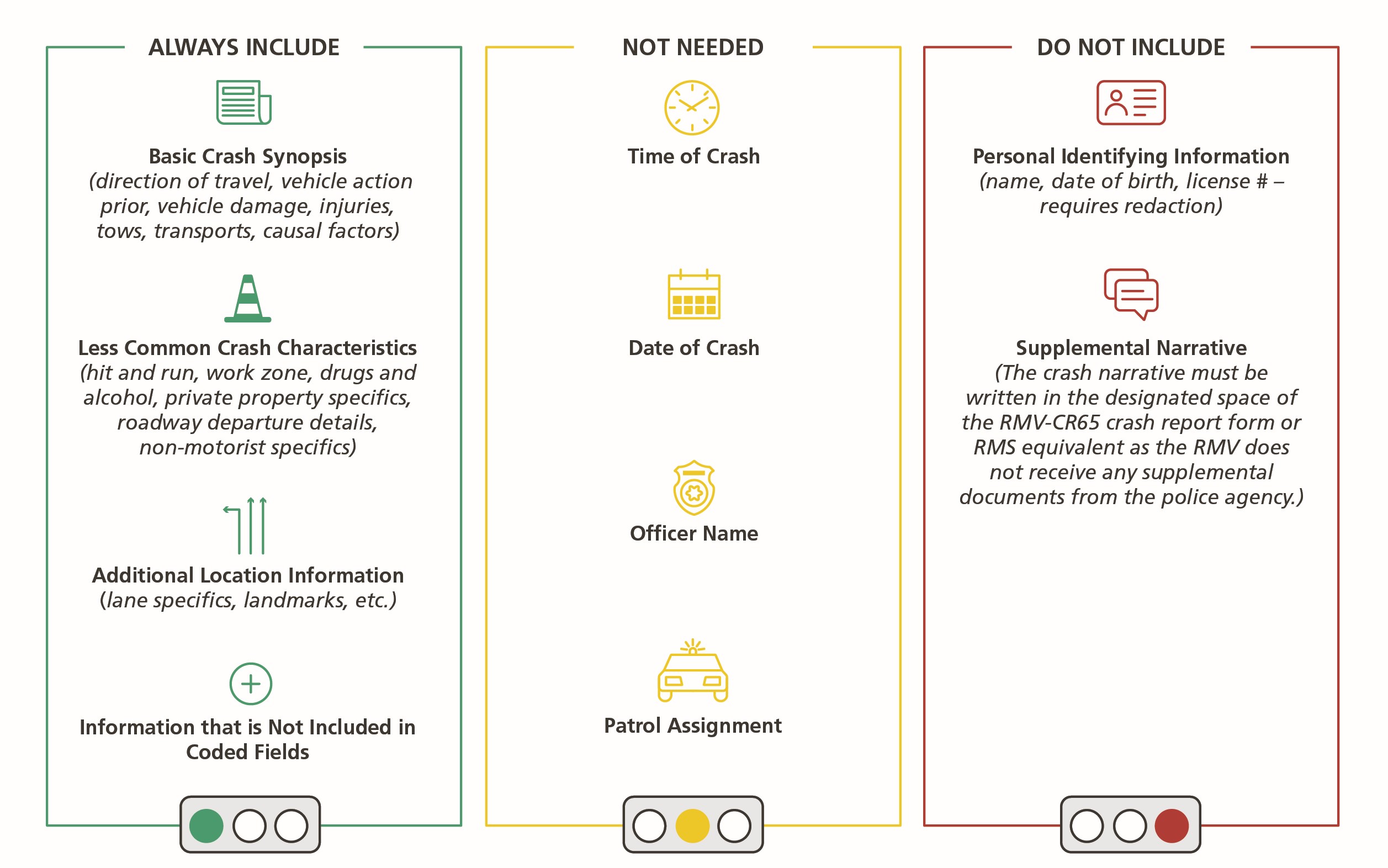The purpose of a crash narrative is to describe what happened prior to, during, and after the crash. With guidance from the RMV and MSP and technical assistance from the RMV law enforcement liaison, UMassSafe created a guide for what information to include and omit on the crash report narrative. Because every crash scene is unique, the officer’s description of events provides critical context and details that cannot be captured in the coded fields. On the other hand, there is also information that is unnecessary to document in the crash narrative — including details that are documented elsewhere in the crash report.
Additionally, there is information that should never be included in the crash narrative, namely personal identifying information. Finally, the crash narrative should be written in the designated space of the RMV-CR65 crash report form, or RMS equivalent, as the RMV does not receive any supplemental documents from the police agency.
The guidelines, which can be downloaded below, should be used when writing the first paragraph of the crash report narrative. However, if departmental guidelines require additional information, please include additional paragraphs.
Download and/print a PDF of the Crash Narrative Guidelines here
Project funded by the Massachusetts Executive Office of Public Safety & Security’s Office of Grants & Research with Section 405-c NHTSA grant funding.

